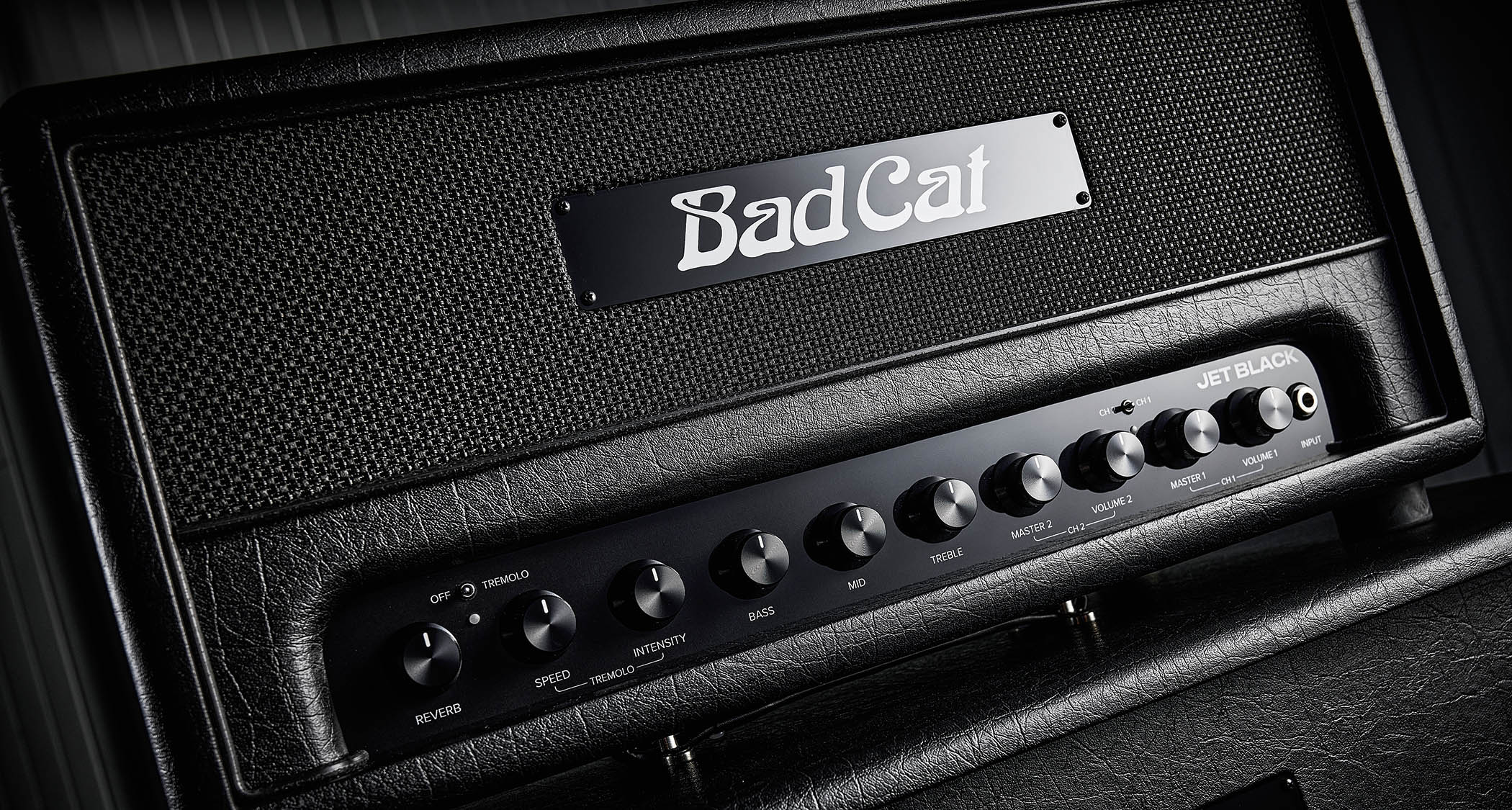
Bad Cat Amplification is celebrating 25 years of manufacturing this year – no mean feat in the turbulent world of boutique guitar amp production. Bad Cat was founded at the turn of the millennium to fill the gap left by the demise of Matchless and, in the early stages, there was some design help and assistance from Matchless founder, Mark Sampson.
However, Sampson left soon after to explore new ventures as Bad Cat followed its own path, with innovations including the K Master volume control and popular new models including the Hot Cat and USA Player Series amplifiers.
Bad Cat relaunched last year with a new design team and a new range of products, including the critically acclaimed Black Cat. Here, we’re looking at another new design that’s already gained significant interest: the Jet Black.
True to its name, Bad Cat’s Jet Black head has a ‘none more black’ design aesthetic, featuring a birch ply sleeve perfectly covered in heavy duty satin black vinyl, set off by shiny black front and rear control panels and smart black anodised aluminium control knobs.
The electronics are contained within a tough aluminium chassis, which supports a pair of generously large custom-wound transformers with distinctive orange-end caps.
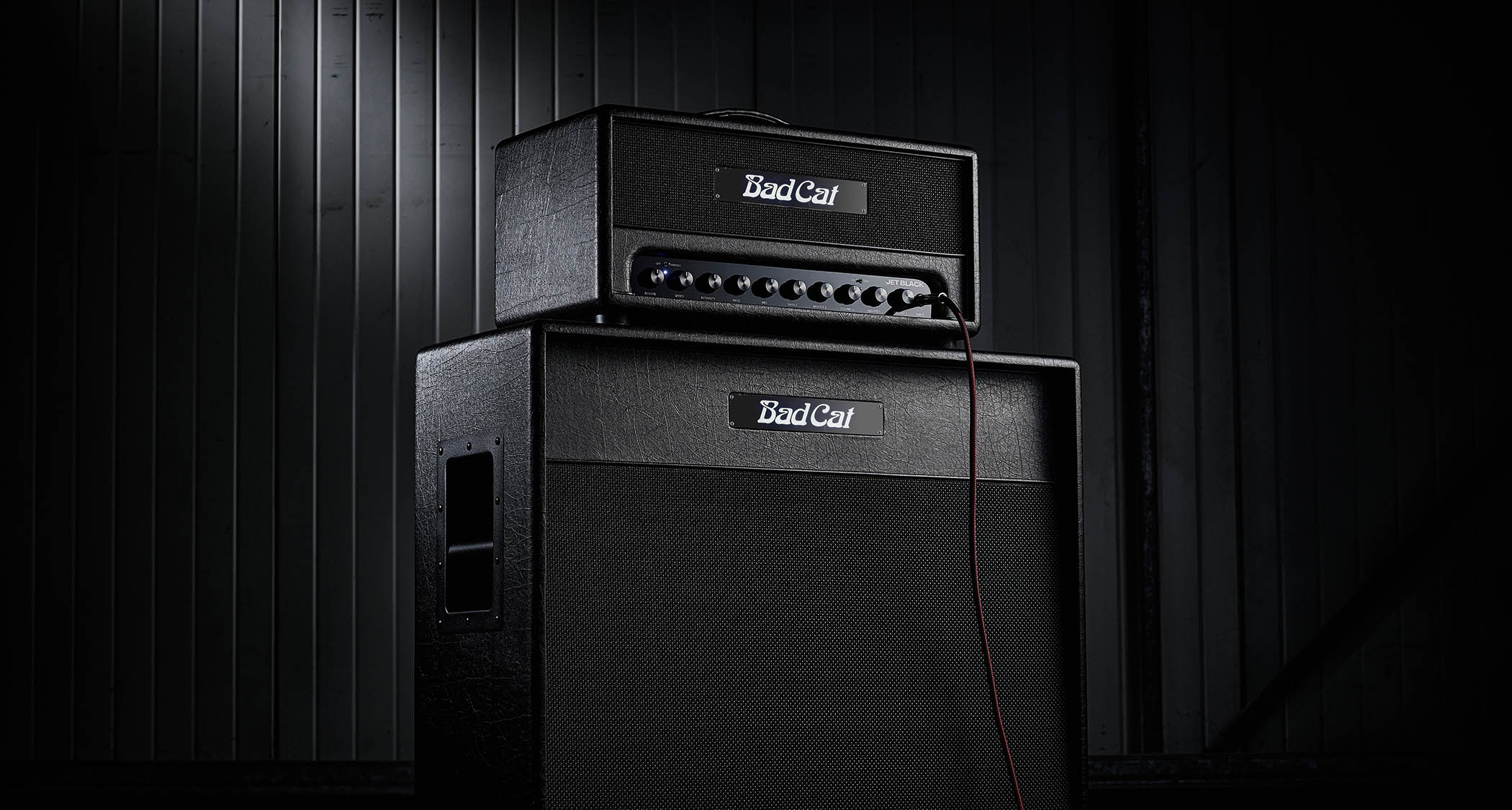
Inside the chassis, the circuits are built up on high-quality printed circuit boards, with one main board holding most of the components, including all the front-panel controls and preamp valve bases.
Two smaller boards support the bases for the Jet Black’s quartet of EL84 output valves and the rear-panel sockets. The minimal wiring is neatly twisted and routed to minimise hum, and the solder joints are all clean and bright.
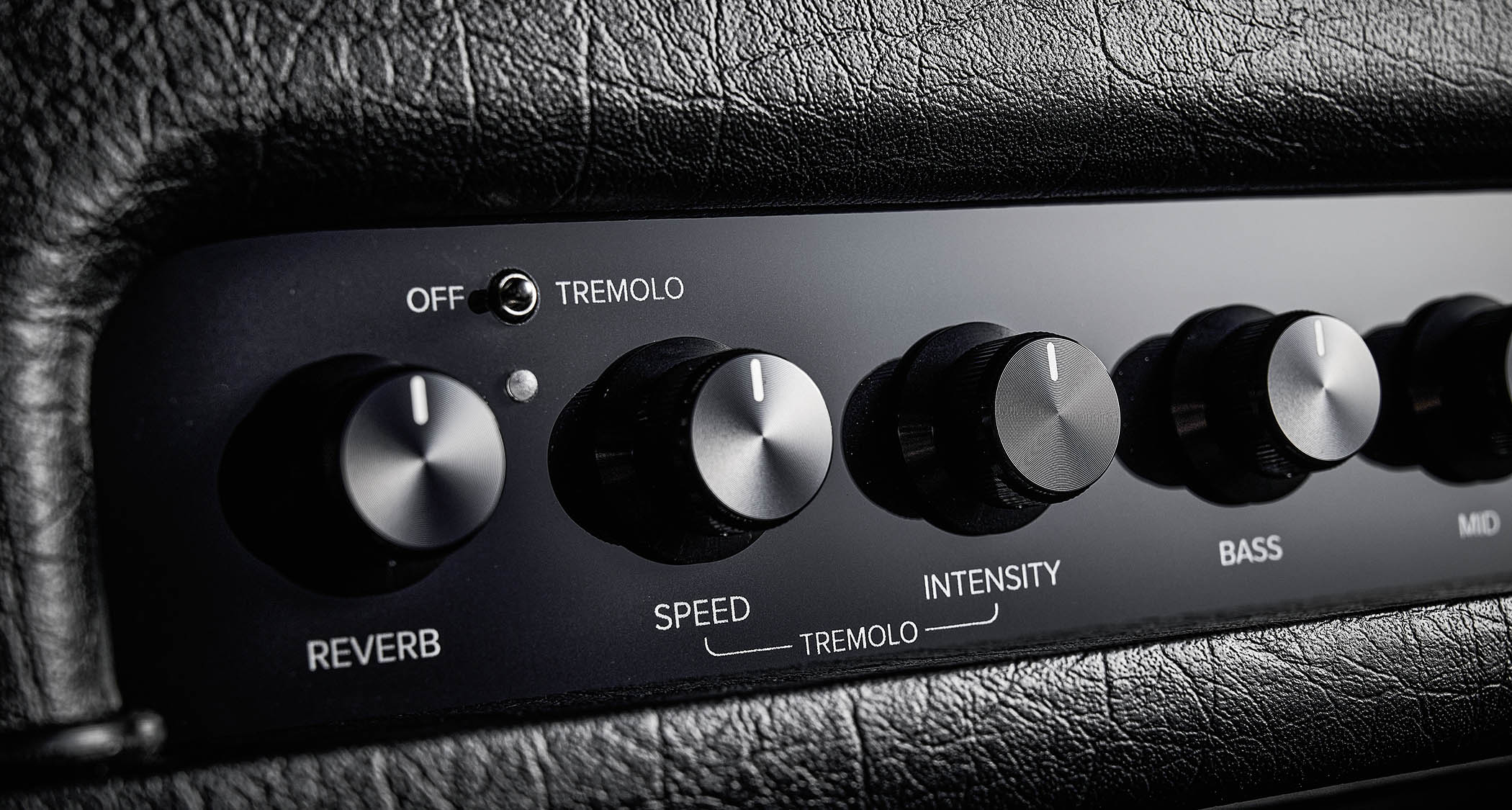
The Jet Black is a two-channel design, with two sets of gain and master volume controls sharing a regular three-band EQ. There are Speed and Intensity controls for the tremolo effect, and a level control for the digital reverb.
On the rear panel, we see a selection of fixed impedance speaker outlets and a fixed level line out, with a buffered series effects loop and a jack socket for the supplied two-button footswitch, which changes channels and toggles the tremolo effect. Two small toggle switches with LED markers on the front panel duplicate these functions for when the footswitch isn’t needed.
The overall impression is one of top-drawer build quality, blended with Bad Cat’s traditional styling and topped off with the trademark illuminated badge, which also serves as a power indicator.
Sounds
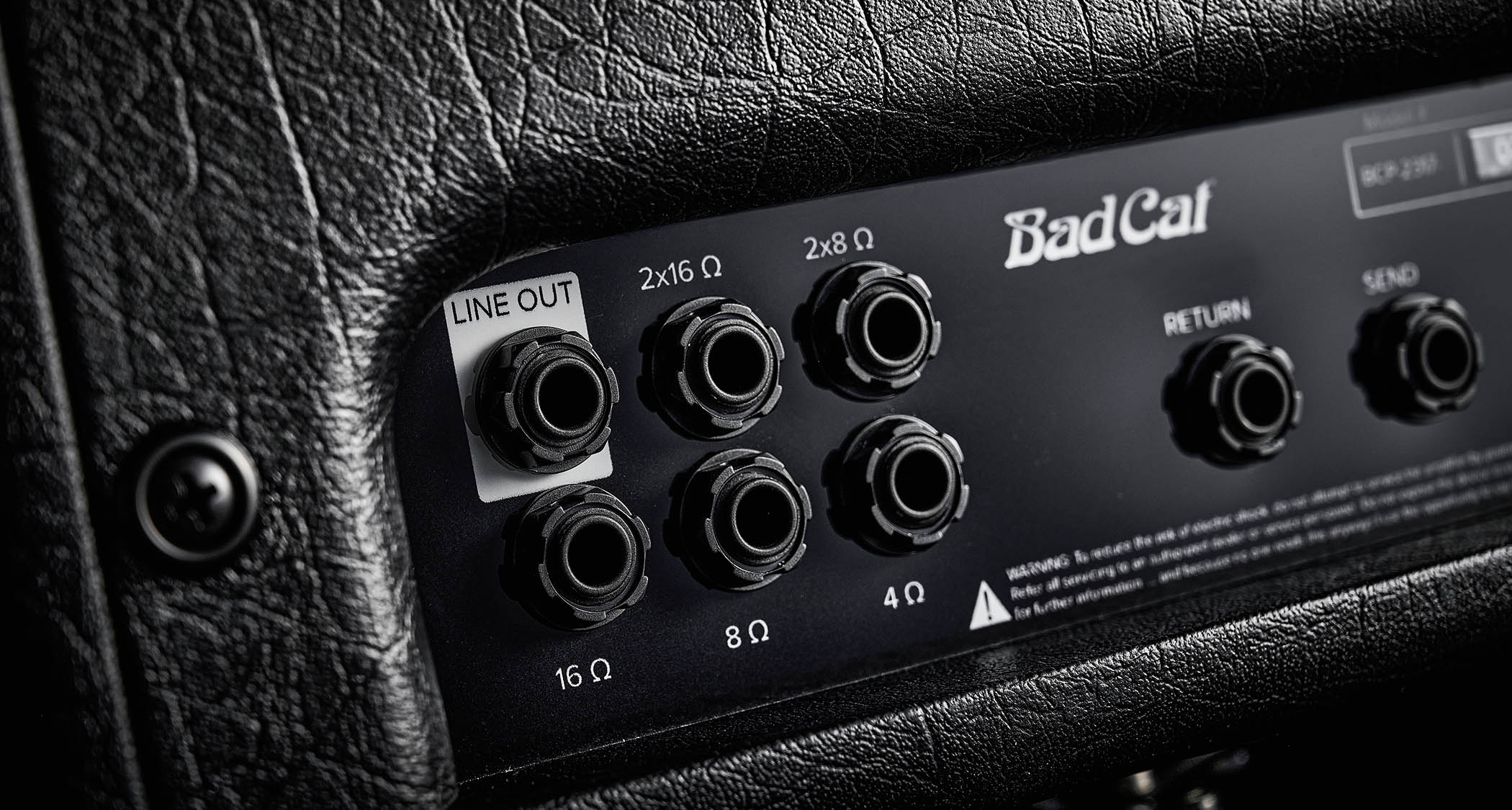
We tried out the Jet Black with our PAF-loaded Les Paul and an American Standard Strat, together with a selection of stompboxes. It fires up with minimal hiss and hum, which is a good sign of a well-tuned circuit.
Channel 1 is similar to the Black Cat, with pristine cleans, exceptional string separation and a smooth articulation that’s a joy to play. This is the Bad Cat signature sound, which has found its way on to numerous gold and platinum albums over the years.
Channel 2 is wilder, with lots more gain and a vigorous, fast attack. It’s not immediately recognisable as a legacy clone; there are elements of Tweed, early Marshall and Vox depending how you set the gain and EQ. However, the Jet Black has its own distinct voice and a fast, dynamic response that can be quite aggressive when needed.
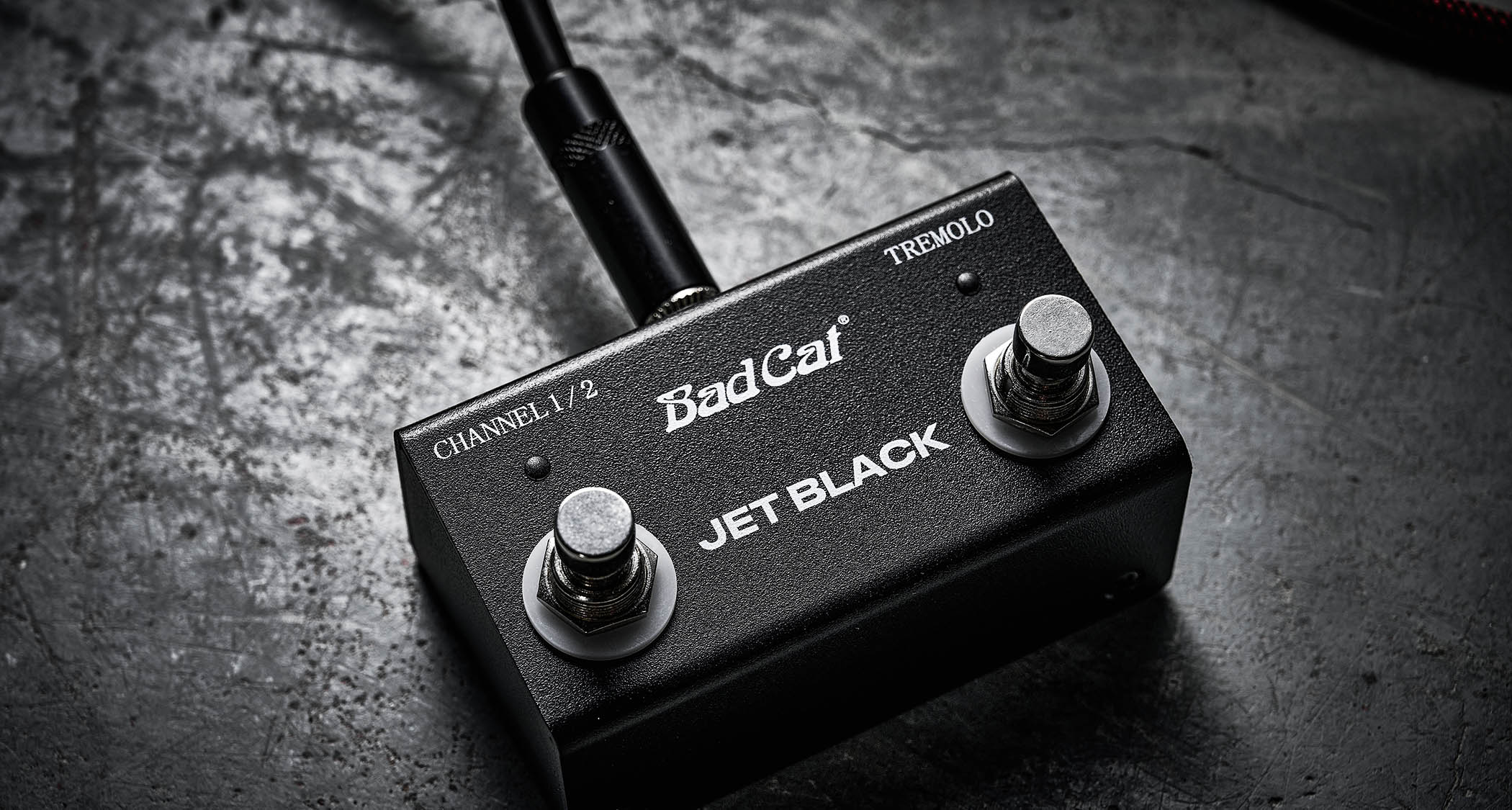
The tremolo effect is nicely dialled in, too, with just the right range of speed and intensity to suit any genre, from slow pulsing Americana to stuttering punk and alt-rock. Meanwhile, the Jet Black’s digital reverb adds a smooth halo to notes or chords, with no hint of splashiness or digital grain; it’s just a really good reverb effect.
The best part of this amp for us is the remarkable touch-sensitive and aggressively toothsome lead tone of Channel 2, which barks like a Rottweiler when you dig in hard
The buffered effects loop works well with delay and modulation effects, while other effects such as wah pedals, compressors and overdrives work equally well plugged into the single input jack. The Jet Black’s three-band EQ works smoothly, too, with no annoying peaks and we found that no matter what guitar we used, the best tones always seem to happen with all three tone controls at or around the 12 o’clock position.
There’s plenty of volume on tap for live gigs, especially when using the Jet Black’s cathode-biased quartet of EL84s partnered up with the oversized 2x12 cab. This closed‑back birch ply cabinet is a bit of a challenge to lug around but makes up for it in the volume and tone stakes, loaded with a pair of Celestion Vintage 30 speakers. It looks the part, too.

Verdict
From the very beginning, Bad Cat amplifiers have had a reputation for great tone, but we think the brand’s new range has raised the bar. The Jet Black’s sparkling cleans and aggressive, punchy lead channel give it a lot of sonic versatility, especially if you team it with a decent overdrive pedal.
Aimed at professionals and serious amateurs, admittedly it’s far from cheap, but you’re paying for one of the best-sounding USA amplifiers currently available, and it compares favourably to other high-end boutique products.

While the head is easy to carry around (there’s a slightly smaller compact version that is a special order), the 2x12 cabinet partnered with the head for this review will be a challenge for those of us who aren’t blessed with teams of roadies.
Tipping the scales at around 33kg, it’s definitely a two-person lift. We’d go for either the combo version or the size-matching 1x12 open-back cab, which just happens to be fitted with Celestion’s G12-H30 Anniversary – one of our all-time favourite Celestion drivers.
The best part of this amp for us, though, is the remarkable touch-sensitive and aggressively toothsome lead tone of Channel 2, which barks like a Rottweiler when you dig in hard. It’s a unique voice that will easily find its own niche in any guitar-based band and help create a signature sound for those lucky enough to own one.
Specs
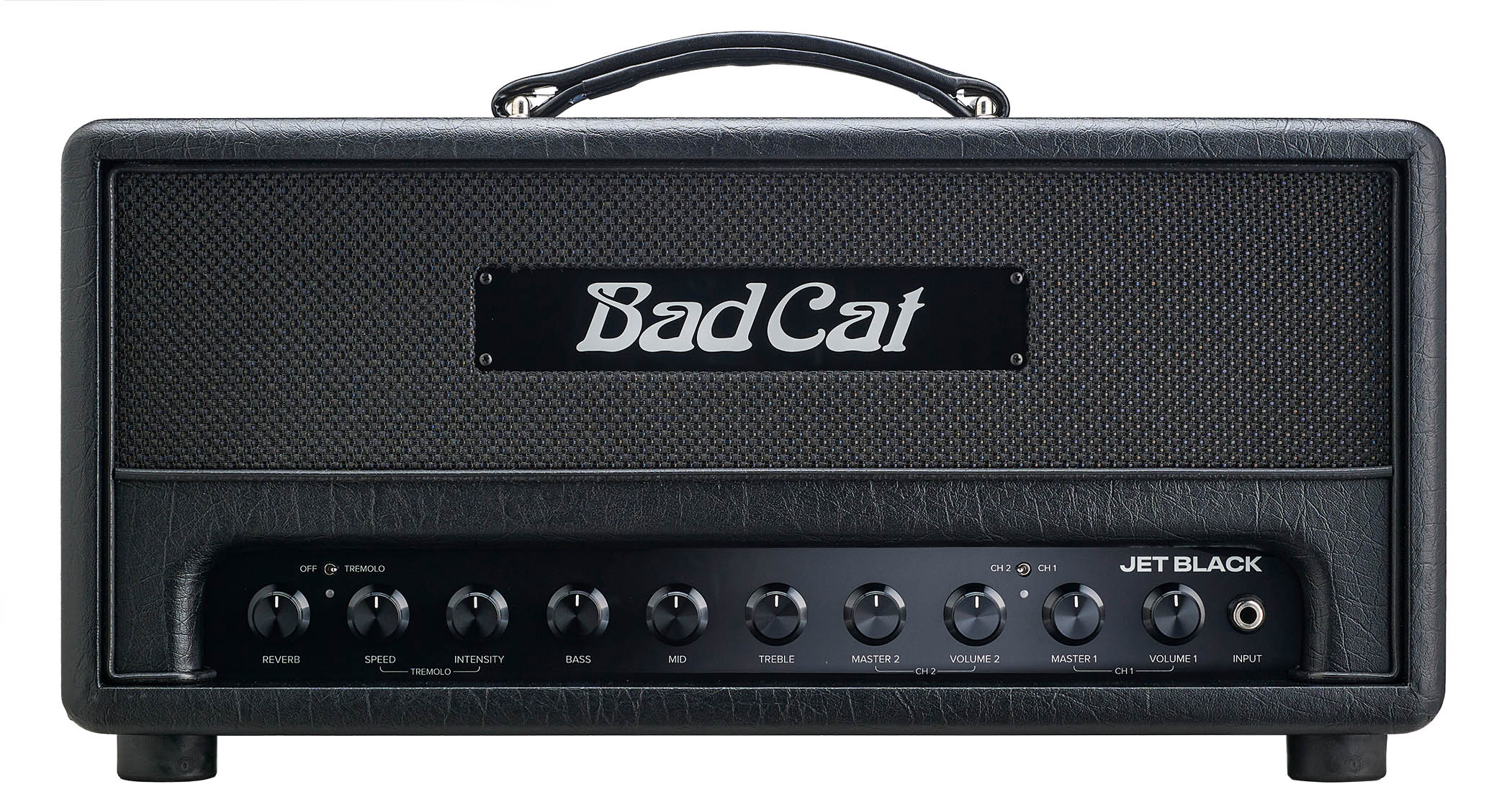
- PRICE: $2,199 / £1,999
- ORIGIN: USA
- TYPE: Valve preamp, valve power amp
- VALVES: 3x 12AX7, 4 x EL84-R
- OUTPUT: 38W RMS
- DIMENSIONS: 527 (w) x 265 (d) x 255mm (h)
- WEIGHT (kg/lb): 14/31
- CABINET: Baltic birch ply
- CHANNELS: 2, footswitchable clean and overdrive
- CONTROLS: Volume 1, Master 1, Volume 2, Master 2. Treble, middle, bass. Tremolo intensity and speed, reverb level
- FOOTSWITCH: 2-button footswitch (supplied) changes channels and toggles tremolo function
- ADDITIONAL FEATURES: Buffered series effects loop, bias-modulated tremolo, studio-quality digital reverb, fixed level line out
- RANGE OPTIONS: A special 25th Anniversary combo version in silver vinyl is limited to 100 pieces worldwide.Speaker cabinet range includes a 1x12 Open-Back Compact w/ Celestion G12H Anniversary speaker, and the following w/ Celestion Vintage 30 speakers: 2x12 Closed-Back, 3x12 Closed-Back and 4x12 Closed-Black Slant Baffle
- CONTACT: Bad Cat Amplification







